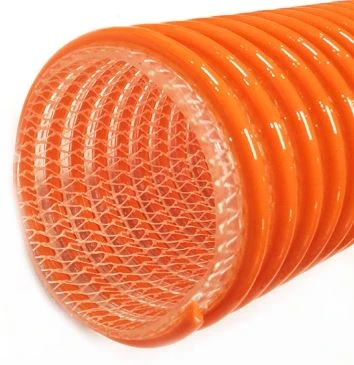Understanding Different Sizes of Layflat Hoses for Various Applications and Uses
Understanding Layflat Hose Sizes A Comprehensive Guide
Layflat hoses are vital in various industries, ranging from agriculture to construction and firefighting. They are designed for the efficient transport of liquids and are often favored for their flexibility and ease of storage. One of the most critical aspects of working with layflat hoses is understanding their sizes. This article will delve into the different sizes of layflat hoses, their applications, and how to choose the right size for your needs.
What is Layflat Hose?
Layflat hose is a flexible, lightweight hose that can be easily laid out flat. Its design allows for rapid deployment and retraction, making it ideal for applications where quick setup and breakdown are necessary. The hose typically consists of a durable, synthetic fabric reinforced with a variety of materials, enabling it to withstand high pressures and resist abrasion and wear.
Common Sizes of Layflat Hose
Layflat hoses come in various diameters and lengths. The most common diameters range from 2 inches to 12 inches, but specialized hoses can go beyond this range depending on the specific application.
1. 2-inch Layflat Hose This small diameter is often used for light-duty applications such as draining water from small fields, irrigation systems, and small construction sites. It's manageable and easy to handle.
2. 4-inch Layflat Hose A versatile size ideal for medium-duty applications. It's frequently used in agricultural irrigation and as a discharge solution for water pumps.
3. 6-inch Layflat Hose This size strikes a balance between capacity and flexibility. It's commonly used in larger irrigation projects and construction sites where substantial amounts of water need to be moved quickly.
4. 8-inch Layflat Hose A popular choice for substantial flood management and large-scale agricultural applications. Its diameter allows for a high flow rate, making it suitable for firefighting efforts as well.
layflat hose sizes

6. 12-inch Layflat Hose and Larger Hoses of this size are typically used in very large pump systems, firefighting, and emergency flood control. Their substantial diameter allows for maximum flow, essential during critical operations.
Selecting the Right Size
When choosing the right layflat hose size, several factors must be considered
- Application Needs Assessing the specific application is crucial. For example, if you are using the hose for irrigation in a small garden, a 2-inch or 4-inch hose might suffice. However, for large-scale agricultural fields, consider using a 6-inch or larger size.
- Flow Rate Consider the required flow rate for your operation. Larger hoses can transport more water but may be cumbersome for smaller tasks.
- Pressure Rating Be sure to check the pressure rating of the layflat hose. Different sizes have varying ratings, which dictate how much pressure the hose can handle. This is particularly important in firefighting applications.
- Length The length of the hose is also a critical consideration. Layflat hoses can come in various lengths, and it's essential to choose one that meets your operational needs without adding unnecessary weight or bulk.
Conclusion
Understanding layflat hose sizes is fundamental to selecting the appropriate hose for your specific application. The flexibility and variety of sizes available in layflat hoses make them an indispensable tool across a range of industries. By considering your flow rate, pressure requirements, and application needs, you can effectively choose the right layflat hose. Whether you need a lightweight option for small irrigation projects or a heavy-duty solution for firefighting, there is a layflat hose size that fits the bill.
-
Top Quality Oxy Acetylene Hoses for Sale Fit for Welding DemandsNewsJul.28,2025
-
The Future of Pneumatic Air Tubes in IndustryNewsJul.28,2025
-
Superior and Reliable LPG Hose Pipe Solutions for Every NeedNewsJul.28,2025
-
Exceptionally Durable and Versatile Premium Braided PVC TubingNewsJul.28,2025
-
Best Adapters for Connecting Garden Hose to PVC Pipe ConnectionsNewsJul.28,2025
-
The Essential Role of LPG Hoses in Safe and Efficient Gas DistributionNewsJul.16,2025














